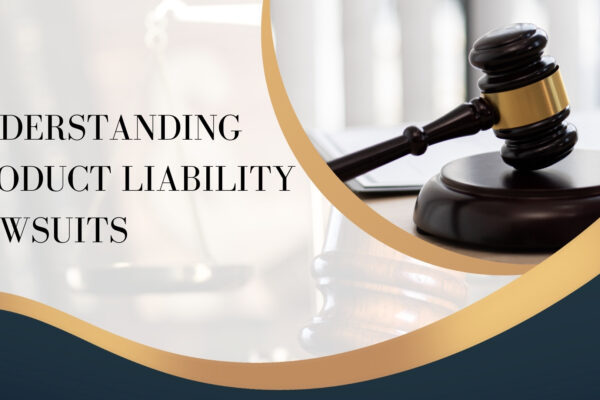337th Issue: 13th February 2022- 19th February 2022
The newly proposed Section 194R of the Income Tax Act in its present form would be a big compliance challenge for businesses as there are multiple types of perquisites & benefits that are extended to their dealers/ distributors/agents/ channel partners etc with the objective of incentivizing and motivating them for the growth of business in the form of Travel packages/ Gift Cards/ Gift vouchers/ Gold Coins/ etc.
Finance Bill 2022 has proposed to insert Section 194R in the Income Tax Act, 1961 with effect from 1st July 2022. Hon’ble Finance Minister in her budget speech has stated while introducing this provision that “It has been noticed that as a business promotion strategy, there is a tendency on businesses to pass on benefits to their agents. Such benefits are taxable in the hands of the agents. In order to track such transactions, I propose to provide for a tax deduction by the person giving benefits, if the aggregate value of such benefits exceeds Rs.20,000 during the financial year.”
As per the memorandum explaining the Finance Bill, the following has been stated regarding the proposed section:
As per clause (iv) of section 28 of the Act, the value of any benefit or perquisite, whether convertible into money or not, arising from business or exercise of profession is to be charged as business income in the hands of the recipient of such benefit or perquisite. In many cases, such recipient does not report the receipt of benefits in their return of income, leading to the furnishing of incorrect particulars of income. This amendment will take effect from 1st July 2022.
We understand from the above that the provision for deduction of tax at source is being inserted to put in place a mechanism to capture and detect such perquisites/ benefits which have largely remained unaccounted and thus untaxed despite there being a specific taxing provision due to their sheer nature.
For complying with the provisions of this section, the taxpayers have to ensure the followings:
- Value of ‘benefits’ and ‘perquisites’ has to be determined which is liable to be TDS.
- The deductor shall ensure that TDS @ 10% is deducted on the prerequisite or benefit.
- The Deductor shall deposit the tax deducted to the credit of the central government on or before the due date, using its ‘TAN’ Number.
- The ‘Deductor’ shall file quarterly TDS Returns in Form 26Q on or before the due dates specified in the act.
- The ‘Deductor’ shall issue a certificate of tax deducted in Form 16A at quarterly intervals to the deductees.
SYNOPSIS
| S.NO. | TOPICS | PAGE NO. |
| 1] | TAX CALENDAR | 4 |
| 2] | INCOME TAX | 5 |
| CIRCULAR | Indian Government releases restrictive interpretation of Most-Favoured-Nation (MFN) clause | |
| 3] | GST | 6 |
| CASE LAW | REFUND OF IGST FOR GOODS EXPORTED FOR ZERO-RATED SUPPLIES: GUJARAT HIGH COURT | |
| 4] | FEMA | 7 |
| CIRCULAR | TRANSACTIONS IN CREDIT DEFAULT SWAP (CDS) BY FOREIGN PORTFOLIO INVESTORS – OPERATIONAL INSTRUCTIONS | |
| 5] | CUSTOMS | 8 |
| NOTIFICATION | Rate of exchange of one unit of foreign currency equivalent to Indian rupees. | |
| 6] | DGFT | 9 |
| PUBLIC NOTICE | PROCEDURE FOR ALLOCATION OF QUOTA, FOR THE YEAR 2022-2023, FOR IMPORT OF CALCINED PET COKE FOR ALUMINUM INDUSTRY AND RAW PET COKE FOR CPC MANUFACTURING INDUSTRY | |
| 7] | UNION BUDGET 2022-23 | 10 |
| 8] | GST PLEADING AND PRACTICE: WITH SECTION-WISE GST CASES & GST NOTICES AND THEIR REPLIES | 11 |
| 9] | LET’S DISCUSS THIS FURTHER | 12 |
TAX CALENDAR
| Due Date | Form/Return/Challan | Reporting Period | Description |
| 14th February | Form- 16B | December 2021 | TDS Certificate for tax deducted under section 194-IA in the month of December 2021 |
| 14th February | Form- 16C | December 2021 | TDS Certificate for tax deducted under section 194-IB in the month of December 2021 |
| 14th February | Form- 16D | December 2021 | TDS Certificate for tax deducted under section 194-M in the month of December 2021 |
| 15th February | Form 3CD | (AY 2021-22) | Extended due date for filing Tax Audit Report for FY 2020-21. |
| 15th February | Form 3CEB |
FY 2020-21 |
Extended due date for filing Tax Audit Report for (international or specified domestic transactions) |
| 13th February | GSTR-6 | January 2022 | Return that has to be filed by an Input Service Distributor (ISD) under GST. |
INCOME TAX
CIRCULAR
Indian government releases clarification in respect of the restrictive interpretation of the most-favored-nation (MFN) clause.
OUR COMMENTS: India’s DTAAs with certain countries have an MFN clause which provides that if, after the signature/entry into force of those DTAAs, India enters into a DTAA on a later date with another OECD member country, providing a beneficial rate of the restrictive scope of taxation of dividends, interest, royalties, etc., then a similar benefit should be accorded under the former DTAAs.
Illustratively, DTAAs signed subsequently by India with countries like Slovenia, Colombia and Lithuania provide for a lower withholding tax (WHT) rate of 5% for dividends, subject to certain conditions. However, these countries were not OECD members when their respective DTAAs with India was entered into but became OECD members only at a later date. There was a lack of judicial guidance on whether the beneficial WHT rate on dividends under the DTAAs with Slovenia, Lithuania, and Colombia could be applied to other DTAAs which have an MFN clause. A Court ruling5 interpreted the MFN provisions in favor of the taxpayer, granting the benefit of the lower WHT rate, and this ruling was subsequently followed by various other Indian Courts.
In addition, countries like the Netherlands and France published a unilateral decree/ notification7 which categorically provides that the benefit of 5% dividend WHT rate as available in the DTAA with Slovenia shall be made applicable to the DTAA with the Netherlands and France. The Swiss competent authorities also released a similar statement on 13 August 2021.
Clarification
The Circular clarifies India’s position on the interpretation of the MFN clause present in the Protocol to India’s DTAAs, especially with certain European states and OECD member countries, as follows:
- A plain reading of the MFN clause in the DTAA provides that the third State has to be a member of the OECD both at the time of conclusion of the respective DTAA with India as well as at the time of applicability of the MFN clause.
- Unilateral decrees, notifications, and clarifications given by the treaty partner(s) do not represent a shared understanding of the applicability of the MFN clause and have no binding effect on India as the same has been issued without any consultation.
- The concessional rate or restricted scope of taxation is to apply from the date of entry into force of the DTAA with the third State and not from the date on which such third State becomes an OECD member.
- A notification under the provisions of the ITL is required to implement the provisions of a DTAA. India has not issued any notification importing the beneficial provisions from DTAAs with Slovenia, Lithuania, and Colombia to the DTAAs with France, Netherlands or Switzerland.
- Selective invocation and application of the MFN clause as reflected in the unilateral instruments of the Netherlands, France, and Switzerland are not permitted as per the rules of interpretation of international treaties. For example, the India-Lithuania DTAA provides for the beneficial WHT rate of 5% on dividend income only if the company receiving the dividends holds directly at least 10% of the capital of the company paying the dividends. However, in all other cases, the WHT rate prescribed is 15%. Import of only the concessional rate of 5% and not the 15% rate for other cases by invoking the MFN clause is not justified.
The Circular clarifies that the benefit of a lower rate and restricted scope under the MFN clause will be provided only when all the following conditions are satisfied cumulatively:
- India’s DTAA with the third State is entered into after the signature/entry into force (depending on the language of the MFN clause) of India’s DTAA with the second State.
- The third State has to be an OECD member at the time of signing its DTAA with India.
- India limits its taxing rights in relation to the rate or scope of taxation in its DTAA with the third State.
- India issues a separate notification under the ITL for importing the favorable benefits of the DTAA with the third State into the DTAA with the second state.
However, it is also clarified that the Circular will not be applicable to taxpayers that have received a favorable decision by any court on this issue.
GST
CASE LAW
Refund of IGST paid for goods exported for zero-rated supplies: Gujarat high court.
BRIEF: Refund withheld on the ground that since drawback is claimed at a higher rate of refund of the petitioner, the same cannot be sanctioned under Section 54 of the Central Goods and Service Tax Act, 2017 – inadvertently the Custom House Agent (CHA) failed to disclose the details of IGST paid of ₹ 17,30,468/.
JUDGEMENT: The provision of Section 54 of the CGST Act read with Section 16 of IGST Act after the goods are exported, the shipping bills are treated as the application of refund of IGST paid in regard to the export goods and the respondents are required to refund the amount of IGST to the petitioner. In the matter on hand, the exports had been made in September 2017, the refund has not been made available. It is though the contention raised by the respondents of the rate of higher and lower duty drawback, though is of 2% in the instant case, the Circular No. 37 of 2018 dated 09.10.2018 is applicable and the exporters, who had availed the option to take drawback at a higher rate in case of IGST refund will need to punch accordingly in the EDI system and the mistake, which has been made by the petitioner in relation to the three bills where the refunds have not been given, the EDI system itself has not allowed the IGST refund.
The hon’ble Gujrat High Court is in complete disagreement with the respondents as not only the petitioner in subsequent correspondence with the respondents has made it completely clear that in the case of these exports the higher duty drawback and the lower duty drawback are the same, the case is covered by the decision of this Court rendered in case of M/S AMIT COTTON INDUSTRIES THROUGH PARTNER, VELJIBHAI VIRJIBHAI RANIPA VERSUS PRINCIPAL COMMISSIONER OF CUSTOMS [2019 (7) TMI 472 – GUJARAT HIGH COURT] where the Court in detailed has discussed this very issue and held that respondents are directed to immediately sanction the refund of the IGST paid in regard to the goods exported, i.e. ‘zero-rated supplies’, with 7% simple interest from the date of the shipping bills till the date of actual refund.
As the issue raised before this Court is identical, no separate or independent discussion would be necessary to be made before this Court. Therefore, the request for a refund so far as the three shipping bills are concerned will need to be permitted. The respondent authority is required to sanction the refund of IGST paid in regard to the goods exported i.e. zero-rated supplies made vide these three Shipping Bills No.8465051, 8459617, and 8455069 dated 05.09.2017, 05.09.2017, and 14.09.2017 respectively.
The decision in the case of Amit Cotton Industries has been delivered on 27.06.2019. The representation had been made by the petitioner in May 2019 and the last one before this petition has been filed, was on 03.02.2021, when this decision had already become final. Assuming that there was nothing in respect of the interest so far as the IGST refund of the said shipping bills was concerned, it could have granted the same knowing fully well that the issue has been covered, the respondents have chosen not to abide by the decision – Considering the fact that the sanction of the refund towards the IGST paid in respect of the goods exported i.e. “zero-rated supplies”, vide the shipping bills ought to have been completed as the two circumstances provided in sub-clauses (a) & (b) of Clause (4) of Rule 96 of Rules, 2017 do not exist. The shipping bills, as per Rule 96, exporter once file are deemed to be an application for refund of integrated tax paid on the exports of goods and withholding of the same is made permissible under Rule 96 (4) when read with Section 54 as specified in the said decision of Amit Cotton Industries.
The respondents are directed to sanction the refund towards the IGST paid in respect to the goods exported i.e. ‘Zero Rated Supplies’ made vide the Shipping Bills No. 8465051, 8459617, and 8455069 dated 05.09.2017, 05.09.2017, and 14.09.2017 respectively.
FEMA
CIRCULAR
Transactions in credit default swap (CDS) by foreign portfolio investors – operational instructions.
OUR COMMENTS: The Reserve Bank of India (RBI) vide A.P. (DIR Series) Circular No. 23, RBI/2021-22/155 dated February 10, 2022, has issued instructions, and Attention of Authorised Persons is invited to the Foreign Exchange Management (Debt Instruments) Regulations, 2019 [Notification No. FEMA. 396/2019-RB dated October 17, 2019], as amended from time to time. A reference is also invited to A.P. (DIR Series) Circular No.31 dated June 15, 2018, A.P. (DIR Series) Circular No. 05 dated May 31, 2021 and Master Direction – Reserve Bank of India (Credit Derivatives) Directions, 2022 dated February 10, 2022, as amended from time to time (hereinafter, Credit Derivatives Directions).
Foreign Portfolio Investors (FPIs) are eligible to be categorised as non-retail users and have been allowed to buy and sell CDS protection under the Credit Derivatives Directions. Necessary directions to Authorised Persons that are eligible to deal with FPIs for transacting in Credit Derivatives in terms of the Credit Derivatives Directions are being issued hereunder.
Selling of CDS protection by all FPIs shall be subject to a limit specified by the Reserve Bank from time to time (hereinafter, aggregate limit). The aggregate limit of the notional amount of CDS sold by FPIs shall be 5% of the outstanding stock of corporate bonds. Clearing Corporation of India Ltd. (CCIL) shall disseminate the utilisation of aggregate limit based on the reporting by the market makers for transactions in the OTC market and reporting by stock exchanges for transactions on exchanges. FPIs shall not sell any CDS protection once the aggregate limit is utilised. The limit utilised for CDS protection sold by the FPI shall be released upon the exit of the CDS position by the FPIs.
Debt instruments received by FPIs as a deliverable obligation and debt instruments purchased by FPIs for meeting deliverable obligation in physical settlement of CDS contracts shall be reckoned under the investment limits for corporate bonds as specified in A.P. (DIR Series) Circular No. 05 dated May 31, 2021, as amended from time to time. In case of non-availability of investment limit at the time of physical settlement, such debt instruments shall be adjusted against the revised limits in the subsequent review of investment limits.
The notional amount of protection sold by FPIs, and the debt instruments received as a deliverable obligation as well as debt instruments purchased for meeting deliverable obligation by FPIs in physical settlement of CDS contracts shall not be subject to minimum residual maturity requirement / short-term limit, concentration limit or single/group investor-wise limits applicable to FPI investment in corporate bonds as specified in paragraphs 4(b), (e) and (f) respectively of A.P. (DIR Series) Circular No. 31 dated June 15, 2018.
These Directions shall come into effect from May 09, 2022.
Authorised Persons may bring the contents of this circular to the notice of their constituents and customers concerned.
The directions contained in this circular have been issued under sections 10(4) and 11(1) of the Foreign Exchange Management Act, 1999 (42 of 1999) and are without prejudice to permissions/approval, if any, required under any other law.
CUSTOMS
NOTIFICATION
Rate of exchange of one unit of foreign currency equivalent to Indian rupees
OUR COMMENTS: The Central Board of Indirect Taxes and Customs hereby determines that the rate of exchange of conversion of each of the foreign currencies specified in column (2) of each of Schedule I and Schedule II annexed hereto, into Indian currency or vice versa, shall, with effect from 4th February 2022, be the rate mentioned against it in the corresponding entry in column (3) thereof, for the purpose of the said section, relating to imported and export goods.
| Sl. No. | Foreign Currency | Rate of exchange of 100 units of foreign currency equivalent to Indian rupees | ||||
|
1 |
2 |
3 |
||||
| (a) | (b) | |||||
| For imported goods | For exported goods | |||||
| 1. | Australian Dollar | 54.60 | 52.30 | |||
| 2. | Bahraini Dinar | 205.05 | 192.50 | |||
| 3. | Canadian Dollar | 60.15 | 58.05 | |||
| 4. | Chinese Yuan | 11.95 | 11.60 | |||
| 5. | Danish Kroner | 11.60 | 11.20 | |||
| 6. | EURO | 86.20 | 83.10 | |||
| 7. | Hong Kong Dollar | 9.80 | 9.45 | |||
| 8. | Kuwaiti Dinar | 256.00 | 239.75 | |||
| 9. | New Zealand Dollar | 51.00 | 48.70 | |||
| 10. | Norwegian Kroner | 8.65 | 8.35 | |||
| 11. | Pound Sterling | 103.35 | 99.85 | |||
| 12. | Qatari Riyal | 21.15 | 19.80 | |||
| 13. | Saudi Arabian Riyal | 20.60 | 19.35 | |||
| 14. | Singapore Dollar | 56.55 | 54.65 | |||
| 15. | South African Rand | 5.05 | 4.70 | |||
| 16. | Swedish Kroner | 8.30 | 8.00 | |||
| 17. | Swiss Franc | 83.10 | 79.85 | |||
| 18. | Turkish Lira | 5.70 | 5.40 |
| 19. | UAE Dirham | 21.05 | 19.75 |
| 20. | US Dollar | 75.75 | 74.05 |
| Sl. No. | Foreign Currency | Rate of exchange of 100 units of foreign currency equivalent to Indian rupees | |
| 1 | 2 | 3 | |
| a | b | ||
| For imported goods | For exported goods | ||
| 1. | Japanese Yen | 66.65 | 64.30 |
| 2. | Korean Won | 6.40 | 6.00 |
DGFT
PUBLIC NOTICE
Procedure for allocation of quota, for the year 2022-2023, for import of (i) calcined pet coke for the aluminum industry and (ii) raw pet coke for the CPC manufacturing industry.
OUR COMMENTS: The Hon’ble Supreme Court in the Writ Petition No. 13029/1985 vide its order dated 9th October 2018, has decreed that the import of raw material for use as Calcined Pet Coke (CPC) in the Aluminum Industry cannot exceed 0.5 Million MT per annum in total. Similarly, the import of Raw Pet Coke for the CPC manufacturing industry cannot exceed 1.4 Million MT per annum. In light of the Order of the Hon’ble Supreme Court, the import policy condition of Pet Coke was amended vide Notification No. 42 dated 23rd October 2018 wherein it had been indicated that the regulation and monitoring of such imports will be as per the guidelines of the Ministry of Environment, Forest and Climate Change.
Conditions and modalities of application for import of Pet coke.
- Imports will be subject to guidelines laid down by MoEF&CC issued vide OM No Q-18011/54/2018-CPA and para-wise compliance may be submitted with the application for consideration of release of quota.
- The annual quantity limitation in import will be operated on a fiscal year basis. Accordingly, the total quantity permitted for import per annum by the Hon’ble Supreme Court and available for import is (i) Calcined Pet Coke for use as Calcined Pet coke in Aluminum Industry is 0.5 Million MT and (ii) Raw Pet Coke for CPC manufacturing industry is 1.4 Million MT. This is available for all industrial units in these two sectors.
- iii. All eligible entities desiring to avail quota as mentioned above, may apply for import license as per procedure mentioned in Trade Notice No. 49 dated 15th March 2019 along with State Pollution Control Board Certificate (SPCB)/ Pollution Control Committee (PCC) indicating the capacity of the unit as on 09.10.2018 (Hon’ble Supreme Court Order in Writ Petition No. 13029/1985) and also valid consent certificate from SPCB/ PCC, in the name of user industrial units indicating the quantity permitted for import and its usage on a monthly and yearly basis.
- Completed online application along with the required documents mentioned must be submitted on or before 28th February 2022. Further, applicants are also required to submit undertaking along with the online application regarding utilization of import license issued to them for FY 2021-22 and surrender any unutilized quantity by 28.02.2022. Failure to do so would result in deduction of such quantity from their allocation for the year 2022-23.
- If documents received are found in order, the online application will be considered by Exim Facilitation Committee (EFC) in DGFT(HQ) for grant of import authorization. The import authorization shall be valid till 31.03.2023 only.
- If, after obtaining permission/license for the year 2022-23. the importer cannot utilize/ import the entire quantity for which the license has been issued, the applicant shall intimate the same to DGFT through email at import-dgft@nic.inon or before 31.12.2022 in order to facilitate distribution of the unutilized quota to other applicants who had applied initially. Failure to utilize allotted quantity and non-surrender will disqualify the applicant for future quota and the unutilized quantity will be deducted from their entitlement.
- vii. Further, the quantity allocated during FY 2022-23 to the user applicants, if not utilized or surrendered to DGFT; the quantity left unutilized will be deducted from the quota for which applicant would be eligible in FY 2023-24, for better resource utilization.
- viii. Holders of the license for import of Pet Coke would keep the DGFT (HQ) informed of the details of his import consignments i.e., the quantity of import, source and date of import along with details of Bill of entry in respect of each consignment on clearance of goods from Customs. Subsequently, a consolidated report within 30 days of the expiry of the import authorization period must be submitted to the DGFT (HQ), giving consolidated details of all imports made during the period.
- EFC in DGFT will evaluate and allocate quota among applicants and licenses will be issued by the DGFT(HQ).
- Import consignments of such consignments may be cleared given that the ‘Out of charge’ has been authorised by the Customs Authorities on or before 31.03.2023.
Effect of this Public Notice:
The procedure for allocation of quota for import of (i) Calcined Pet Coke for use in Aluminum Industry; and (ii) Raw Pet Coke for CPC manufacturing industry for the year 2022-2023 is notified.
 CA Vivek Jalan
CA Vivek Jalan
Vivek Jalan, from Tax Connect, is a Chartered Accountant & a qualified L.LM & LL.B. He is The Chairman of The Ease of Doing Business Committee therein. He is a member of The Confederation of Indian Industries (CII)- Economic Affairs & Taxation Committee. He is the Member of The Consultative Committee of The Commissioner of SGST. He is also The Member of The Regional Advisory Committee of The Chief Commissioner of CGST. He is advising Large MNCs, PSUs & PAN India Organizations in GST & Income Tax and has offices in Kolkata, Delhi, Bangalore, Mumbai & now Surat. He is a regular Columnist and guest expert in Economic Times, Times of India, Dalal Street Journal, Money Control, Live mint, CNBC, Hindustan Times, Zee Business, Financial Express, other dailies, and business magazines like Business Today, etc. He is also a guest expert on Taxation matters in All India Radio and other media platforms. He is the Editor of Weekly Bulletin TAX CONNECT, a publication on Indirect Taxes and Direct Taxes which reaches more than 70000 professionals.











